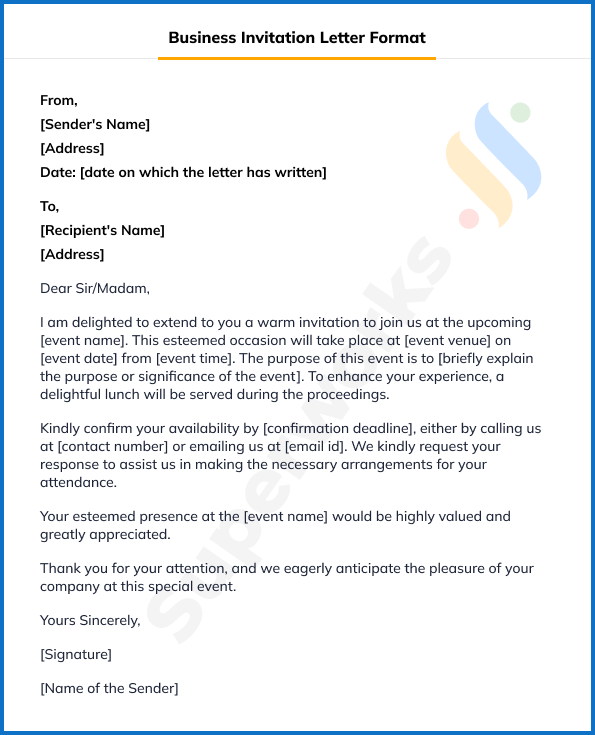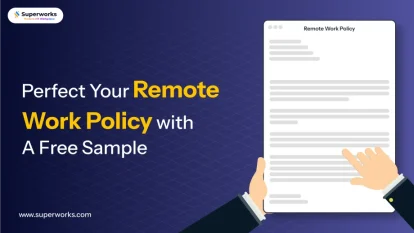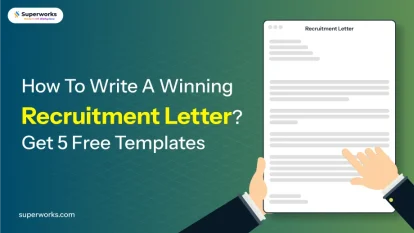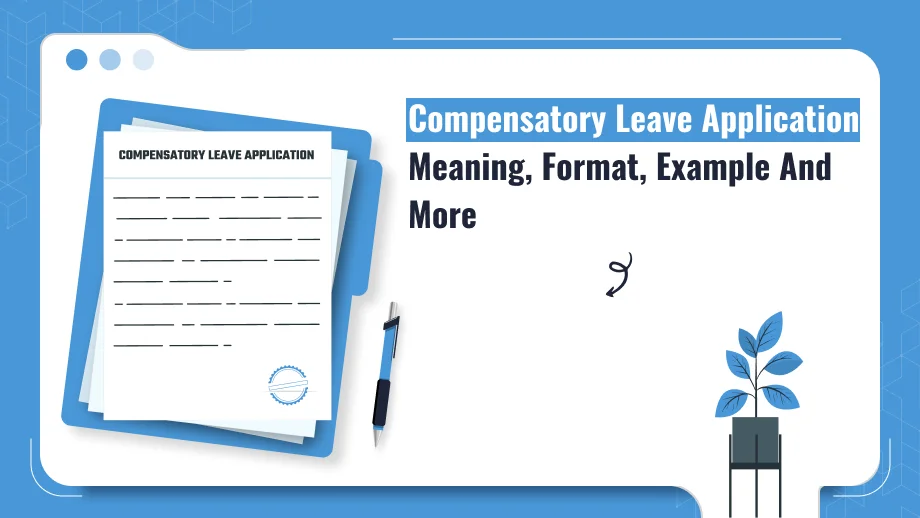Grab a chance to avail 6 Months of Performance Module for FREE
Book a free demo session & learn more about it!
-
Will customized solution for your needs
-
Empowering users with user-friendly features
-
Driving success across diverse industries, everywhere.
Grab a chance to avail 6 Months of Performance Module for FREE
Book a free demo session & learn more about it!
Superworks
Modern HR Workplace
Your Partner in the entire Employee Life Cycle
From recruitment to retirement manage every stage of employee lifecycle with ease.


Seamless onboarding & offboarding
Automated compliance & payroll
Track performance & engagement
Understand the Power of a Persuasive Business Invitation Letter
- invitation letter for business
- 11 min read
- June 27, 2023
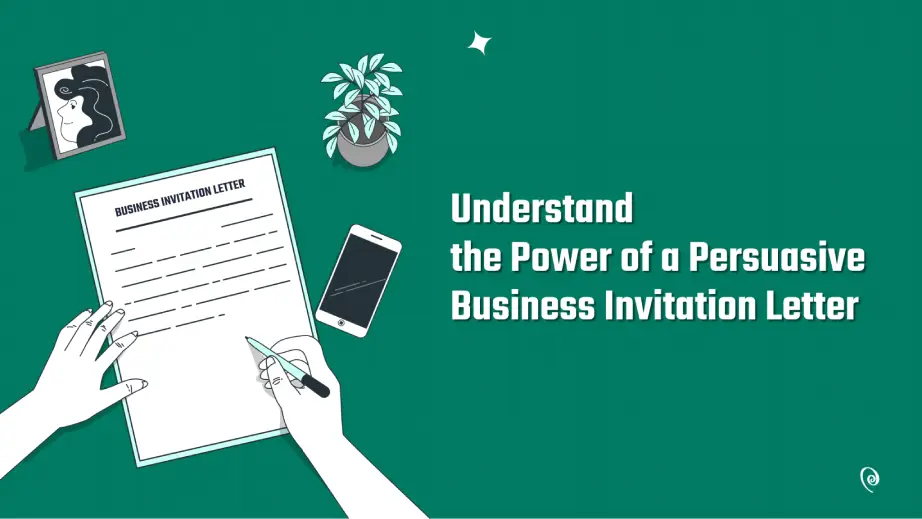
Did you know that a well-crafted business invitation letter has the power to open doors, forge valuable connections, and unlock a world of opportunities? Statistics reveal that an impressive 85% of business professionals consider a persuasive invitation letter to be crucial for securing attendance and generating positive responses. Whether you’re hosting a networking event, conference, or business meeting, mastering the art of writing an effective invitation letter is essential.
In this blog, we delve into the secrets behind creating an effective business invitation letter that commands attention and compels recipients to take action. Let’s dive in and harness the true potential of your invitations and pave the way to success in the corporate world.
Note:You can download directly from here and edit as per your need.
- What is a Business Invitation Letter?
- Importance of a Well-Crafted Invitation Letter for Business
- 5 Myths About a Business Invitation Letter
- Myth 1: A business invitation letter is unnecessary in the digital age.
- Myth 2: An invitation letter should be lengthy and detailed.
- Myth 3: Invitations should only focus on the event itself.
- Myth 4: Invitation letters must be formal and devoid of creativity.
- Myth 5: Sending invitation letters is a one-time communication.
- How to Write A Perfect Business Invitation Letter?
- Business Invitation Letter Format
- Parting Thoughts
What is a Business Invitation Letter?
A business invitation letter is a formal document written to invite individuals or organizations to participate in a business-related event or activity. It serves as an official communication to extend an invitation for conferences, seminars, trade shows, meetings, or other professional gatherings.
The letter typically includes important details such as the purpose of the event, date, time, venue, agenda, and any special instructions or requirements. It may also include information about the host organization, the event’s significance, and the potential benefits of attending. A well-crafted business invitation letter, along with a requirements gathering template, helps establish a professional and cordial tone, encouraging recipients to consider and respond to the invitation positively
Importance of a Well-Crafted Invitation Letter for Business
A well-crafted business invitation letter holds significant importance for several reasons:
1. Professional Image:
It establishes a professional image for the host organization by showcasing attention to detail, clear communication, and professionalism. It reflects the host’s commitment to organizing a successful event.
2. Clear Communication:
A well-written invitation letter ensures that the recipients have a clear understanding of the purpose, date, time, and venue of the event. This minimizes confusion and helps participants plan accordingly.
3. Increased Attendance:
An invitation letter that effectively conveys the value and benefits of attending the event can generate interest and increase the likelihood of a positive response. It can influence recipients to prioritize and commit to attending the event.
4. Networking Opportunities:
By clearly outlining the agenda and highlighting the potential networking opportunities available at the event, a well-crafted invitation letter encourages recipients to attend and engage with other participants, fostering valuable connections and collaborations.
5. Professional Etiquette:
Sending a formal invitation letter demonstrates respect and adherence to professional etiquette. It shows that the host values the recipient’s time and participation, further enhancing the perceived credibility and reputation of the host organization.
6. RSVP and Planning:
A well-crafted invitation letter includes a clear request for RSVP, allowing the host to plan and make necessary arrangements based on the expected number of attendees. This ensures a well-organized event and helps manage logistics efficiently.
5 Myths About a Business Invitation Letter
Here are some of the most common myths about business invitation letters you must know about:
Myth 1: A business invitation letter is unnecessary in the digital age.
Reality: While digital communication has become prevalent, a well-crafted invitation letter still holds value. It provides a tangible and formal invitation that can official leave application format a lasting impression. In certain contexts, such as high-profile events or formal gatherings, a physical invitation letter can demonstrate respect and enhance the perceived importance of the event.
Myth 2: An invitation letter should be lengthy and detailed.
Reality: Invitation letters should be concise and focused, providing essential information without overwhelming the reader. Including the purpose of the event, date, time, venue, and RSVP instructions is sufficient. Lengthy letters may lead to information overload, causing recipients to lose interest or miss crucial details.
Myth 3: Invitations should only focus on the event itself.
Reality: While event details are crucial, a well-crafted invitation letter goes beyond mere logistics. It should highlight the benefits and value of attending the event, such as keynote speakers, panel discussions, networking opportunities, or industry insights. This helps recipients understand why the event is worth their time and encourages their participation.
Myth 4: Invitation letters must be formal and devoid of creativity.
Reality: While maintaining professionalism is important, invitation letters can still incorporate creative elements to make them visually appealing and engaging. This can include tasteful design elements, such as a professional logo or branding, visually appealing formatting, or carefully chosen language that conveys enthusiasm and excitement about the event.
Myth 5: Sending invitation letters is a one-time communication.
Reality: Maximizing attendance requires ongoing communication beyond the initial invitation letter. Sending timely reminders, updates, or additional information through email, social media, or event platforms can help keep recipients engaged and informed. This ensures that they have all the necessary details and increases the chances of their attendance.
By dispelling these myths, businesses can better understand the importance of a well-crafted invitation letter and leverage it effectively to engage recipients and increase the success of their events.
Read More – Inform Employees About the Annual Bonus With a Bonus Announcement Letter

Unable to ready-to-use letter templates? Don’t worry, – we have them!
Introducing Superworks HR Toolkit: Your one-stop solution for easily customizable hr templates and samples. So, it is time for you to say goodbye to the hassle and stress of crafting important business letters and emails!
Simplify your documentation process and save more than 80% of your time NOW!
How to Write A Perfect Business Invitation Letter?
To write a perfect business invitation letter, follow these detailed pointers:
1. Heading & Salutation:
The invitation letter should start with a professional heading that includes your organization’s name and address. Place it at the top of the letter, aligned to the left. Below the heading, include a formal salutation, addressing the recipient by their name if possible. Use titles such as “Dear Mr. Smith” or “Dear Dr. Johnson” followed by a colon. If you are unsure of the recipient’s name, use a generic salutation like “Dear Sir/Madam.” This establishes a formal and respectful tone from the beginning, making a positive impression on the recipient.
2. Introduction
Begin the invitation letter with a warm and concise introduction that expresses your pleasure in inviting the recipient to the event. Keep it brief, but convey your enthusiasm for their attendance. Mention the purpose of the event and its significance, providing a compelling reason for the recipient to participate. For example, if it’s a conference, highlight the opportunity to gain industry insights or learn from renowned speakers. This introduction sets the tone for the invitation, captures the recipient’s interest, and establishes the event’s importance, encouraging them to continue reading and consider attending.
3. Event Details:
Clearly communicate the date, time, and duration of the event in the invitation letter. Include the complete address of the venue, ensuring recipients can easily locate it. If there are any specific instructions or landmarks, mention them to assist attendees. Additionally, inform recipients if meals or refreshments will be provided during the event. This level of detail helps recipients plan their schedule accordingly and prepares them for the logistics of attending. By providing clear event details, you demonstrate organization and professionalism, enabling recipients to make informed decisions regarding their attendance.
4. Event Highlights:
Capture the recipient’s interest by highlighting key speakers, panel discussions, workshops, or other notable features of the event in the invitation letter. Emphasize the benefits and value attendees can expect to gain from participating, such as networking opportunities, industry insights, or the chance to learn from experts in the field. By showcasing the event’s unique offerings, you create anticipation and demonstrate the value of attending. This entices recipients by illustrating how the event can contribute to their professional growth or provide valuable connections and knowledge within their industry.
5. RSVP & Registration:
Clearly outline the RSVP process and provide contact information for recipients to respond to the invitation in the invitation letter. Specify the deadline by which recipients should RSVP. Additionally, include information on how attendees can register for the event, whether it’s through an online registration form, email, or other means. If there are any registration fees, discounts, or special requirements, mention them in a clear and concise manner. Making the RSVP and registration process easy and straightforward encourages prompt responses and ensures a smooth registration process for attendees.
6. Closing:
Conclude the invitation letter with a polite closing statement that expresses your anticipation of the recipient’s attendance. Thank them for their time and consideration. Provide your contact details, including phone number and email address, for any further inquiries or clarifications they may have. This demonstrates your availability and willingness to assist them. End the letter with a professional closing, such as “Sincerely” or “Best regards,” followed by your name and your position within the organization. A well-crafted closing leaves a positive impression and reinforces the professional tone of the invitation letter.
7. Professional Tone:
Maintain a professional and cordial tone throughout the invitation letter. Use clear and concise language, avoiding jargon or excessive technical terms that may confuse recipients. Be mindful of your tone and ensure it aligns with the formality of the event and the relationship with the recipient. Proofread the letter for grammar and spelling errors to maintain a polished and professional appearance. A well-written invitation letter conveys your organization’s professionalism, attention to detail, and respect for the recipient, setting a positive tone for the event and increasing the likelihood of a favorable response.
8. Visual Appeal:
Consider the formatting and design of the invitation letter to enhance its visual appeal. Use a clean and professional font that is easy to read. Pay attention to the font size, ensuring it is legible. Incorporate sufficient white space to make the letter visually appealing and easy to navigate. Include your organization’s logo or branding elements for recognition and to reinforce your professional image. Just as with well-designed digital products templates or eBooks, a polished and professional presentation catches attention, conveys professionalism, and leaves a strong first impression.
9. Personalization:
Whenever possible, personalize the invitation letter to create a connection with the recipient. Address them by their name and tailor the content to their specific interests or previous interactions, if applicable. Reference any shared goals, experiences, or common interests to demonstrate that the invitation is not a generic mass communication. Personalization shows that you value the recipient as an individual and increases the likelihood of a positive response. It helps foster a sense of importance and makes the recipient feel recognized and valued, ultimately increasing their engagement and interest in attending the event.
10. Follow-Up:
Send the invitation letter well in advance of the event to allow recipients ample time to respond. However, don’t stop at just sending the initial invitation. Follow up with timely reminders as the RSVP deadline approaches. You can also do it through email or various other communication channels. Provide additional event details or updates, if any, to keep recipients informed and engaged. Following up shows your commitment to ensuring a successful event and helps to maintain interest and momentum among recipients. It also serves as a gentle nudge for those who may have overlooked or forgotten about the initial invitation.
11. Proofreading & Editing:
Before sending out the invitation letter, thoroughly proofread and edit it to ensure clarity, correctness, and professionalism. Double check and see if there’s any spelling, grammatical, or punctuation errors. Review the content to ensure it is concise, relevant, and effectively conveys the necessary information. Pay attention to formatting, ensuring consistency in font style and size. Carefully review all contact details, including email addresses and phone numbers, to avoid any inaccuracies. Taking the time to carefully proofread and edit the invitation letter demonstrates attention to detail and ensures that the final document is polished and error-free, leaving a positive impression on recipients.
By following these pointers, you can write a perfect business invitation letter that effectively communicates the event’s details, benefits, and encourages positive responses from recipients.
Business Invitation Letter Format
Parting Thoughts
In conclusion, the power of a well-crafted business invitation letter cannot be underestimated. This document serves as the gateway to forging meaningful connections, securing partnerships, and expanding opportunities in the business world.
A carefully constructed invitation letter demonstrates professionalism, attention to detail, and genuine interest in collaboration. It sets the tone for a successful business meeting, conference, or event, capturing the attention and trust of recipients.
We hope this blog helped you to write a compelling invitation letter that effectively communicates the purpose, benefits, and expectations of the proposed engagement, leaving a lasting impression on the recipients.
If you wish to get your hands on more letter templates that are customizable and absolutely FREE- do check Superworks HR toolkit.






